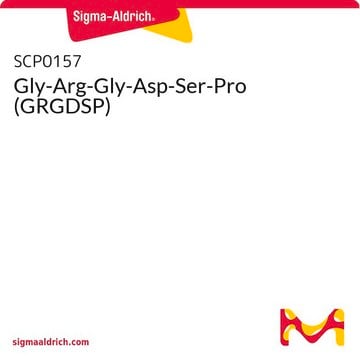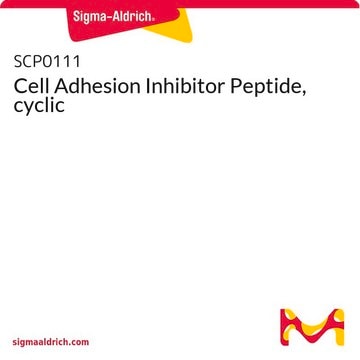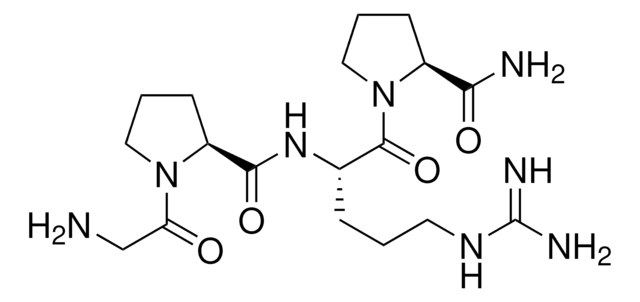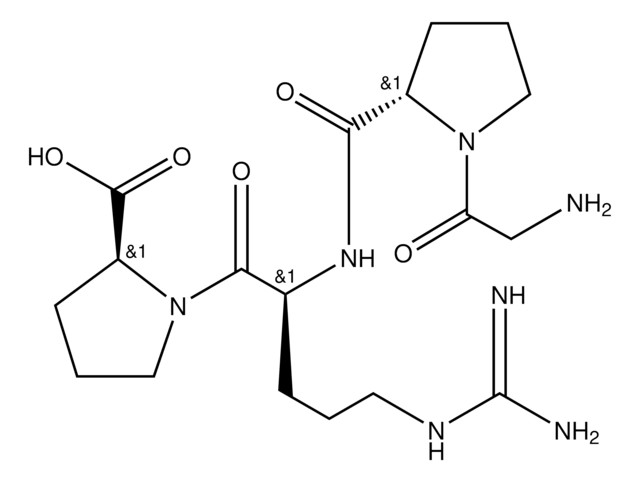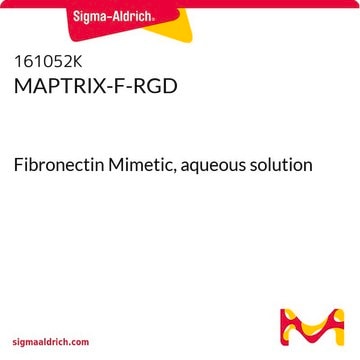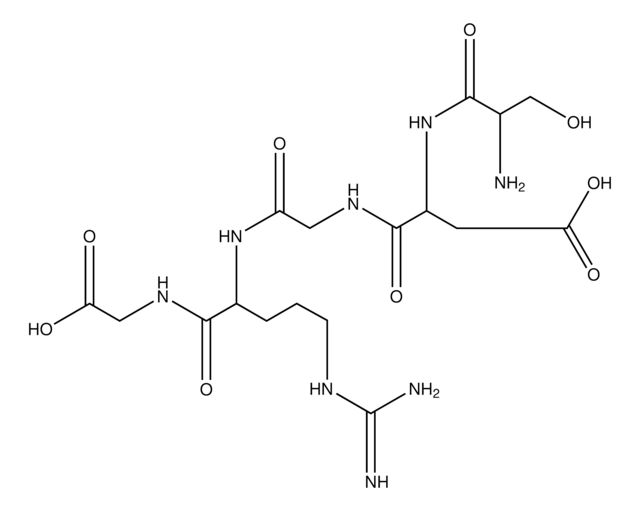G1269
Gly-Arg-Gly-Asp-Ser-Pro-Lys
≥97% (HPLC)
Synonym(s):
GRGDSPK
About This Item
Recommended Products
biological source
human
Quality Level
Assay
≥97% (HPLC)
form
powder
technique(s)
blocking: suitable
ligand binding assay: suitable
storage temp.
−20°C
SMILES string
NCCCC[C@H](NC(=O)[C@@H]1CCCN1C(=O)[C@H](CO)NC(=O)[C@H](CC(O)=O)NC(=O)CNC(=O)[C@H](CCCNC(N)=N)NC(=O)CN)C(O)=O
InChI
1S/C28H49N11O11/c29-8-2-1-5-16(27(49)50)37-25(47)19-7-4-10-39(19)26(48)18(14-40)38-24(46)17(11-22(43)44)36-21(42)13-34-23(45)15(35-20(41)12-30)6-3-9-33-28(31)32/h15-19,40H,1-14,29-30H2,(H,34,45)(H,35,41)(H,36,42)(H,37,47)(H,38,46)(H,43,44)(H,49,50)(H4,31,32,33)/t15-,16-,17-,18-,19-/m0/s1
InChI key
ZRVZOBGMZWVJOS-VMXHOPILSA-N
Gene Information
human ... ITGA2B(3674) , ITGAV(3685)
Looking for similar products? Visit Product Comparison Guide
Amino Acid Sequence
General description
Application
- as a blocking peptide to inhibit integrin-fibronectin binding
- in adhesion assay performed on porcine trophectoderm to study the influence of TGFβ (transforming growth factor) on cell adhesion
- for incubation of MC3T3-E1 osteoblast cells to determine its effect on cell adhesion measured by AFM (atomic force microscopy)
- for the preparation of RGD.Flt23k.NR nanoparticles
- to determine the involvement of RGD-integrin bonding in cell adhesion process
Biochem/physiol Actions
Storage Class Code
11 - Combustible Solids
WGK
WGK 3
Flash Point(F)
Not applicable
Flash Point(C)
Not applicable
Personal Protective Equipment
Certificates of Analysis (COA)
Search for Certificates of Analysis (COA) by entering the products Lot/Batch Number. Lot and Batch Numbers can be found on a product’s label following the words ‘Lot’ or ‘Batch’.
Already Own This Product?
Find documentation for the products that you have recently purchased in the Document Library.
Customers Also Viewed
Our team of scientists has experience in all areas of research including Life Science, Material Science, Chemical Synthesis, Chromatography, Analytical and many others.
Contact Technical Service
